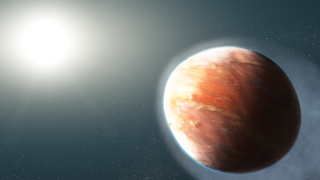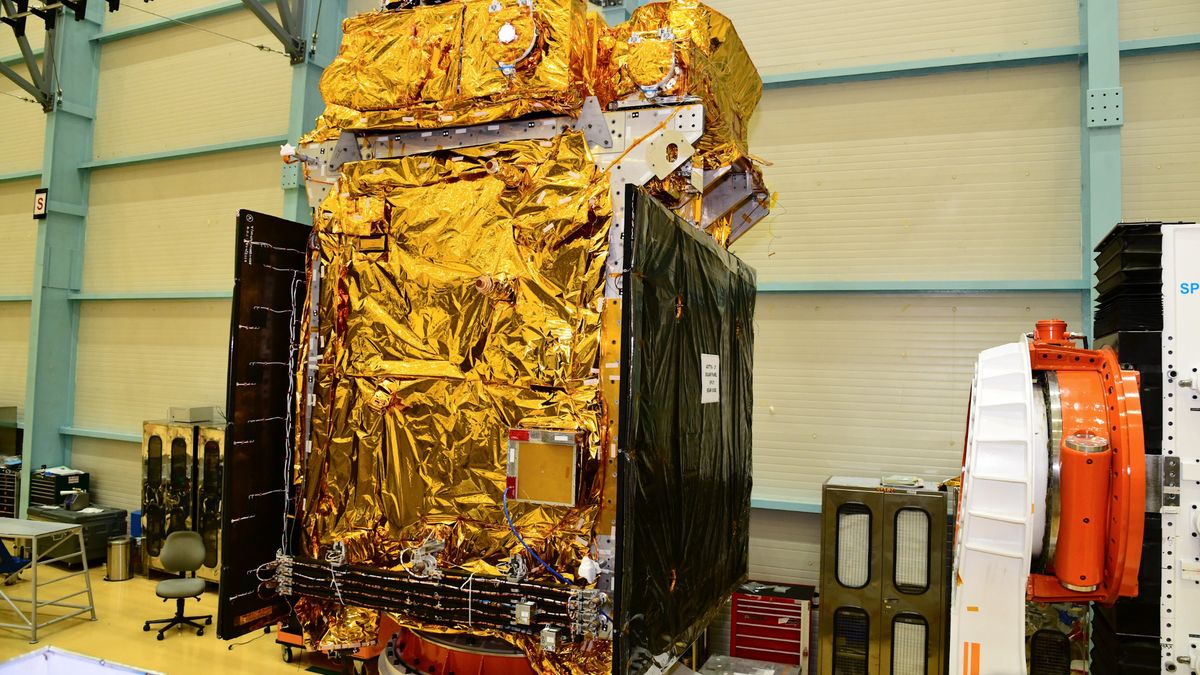Astronomers have discovered a rare temperature-sensitive molecule that is usually associated with stars in the atmosphere of an exoplanet for the first time. The “thermometer molecule” chromium hydride is abundant in a narrow range of temperatures between 1,700 degrees Fahrenheit to 3,140 degrees Fahrenheit (926 to 1,730 degrees Celsius). It was discovered in the atmosphere of the “hot Jupiter” exoplanet WASP-17b, which orbits an F-type star located around 1,250 light-years from Earth. The discovery of such a metal hydride — a metal bonded to hydrogen to form a new compound…
Read MoreNASA invita a hispanohablantes a enviar sus nombres en Europa Clipper
La NASA ha lanzado un nuevo sitio web en español para invitar al público a enviar sus nombres a bordo de Europa Clipper, una misión que iniciará su viaje a la luna de Júpiter Europa en octubre de 2024. Este nuevo sitio web forma parte de una campaña de la agencia llamada “Mensaje en una botella”, mediante la cual un poema original dedicado a Europa
Read MoreStudying the Wind with Weather Balloons
Rocky Garcia and Wesley James prepare a weather balloon to collect wind data at NASA’s Armstrong Flight Research Center in Edwards, California, on July 20, 2023.
Read MoreThe CIA knows a lot about other nations’ space programs. You can too with its new ‘World Factbook’ update
The CIA wants to share what it knows about world space programs. Some of what it knows, anyway. The United States Central Intelligence Agency, better known as the CIA, has released a new entry in its World Factbook that catalogues the programs and milestones of space agencies around the world. Over 90 countries and the European Union are represented in the new Space Programs section of the agency’s factbook, spanning from Algeria to Zimbabwe. A CIA spokesperson told Space.com that, due to the increased visibility of space programs around the…
Read MoreIndia to launch Aditya-L1, its 1st solar probe, on Sept. 2
India will launch its first sun-studying spacecraft this weekend, if all goes according to plan. The Aditya-L1 solar observatory is scheduled to launch Saturday (Sept. 2) at 2:20 a.m. EDT (0620 GMT; 11:50 local India time), the Indian Space Research Organization (ISRO) announced on Monday (Aug. 28). The spacecraft will lift off atop a Polar Satellite Launch Vehicle from Satish Dhawan Space Centre, on the island of Sriharikota, just off India’s east coast. You’ll be able to watch the action here at Space.com, courtesy of ISRO. Related: Space weather: What…
Read MoreJames Webb Space Telescope and Hubble will help NASA’s Juno probe study Jupiter’s volcanic moon Io
The James Webb Space Telescope (JWST) and the Hubble Space Telescope are set to team up and observe the solar system’s most volcanic body: A moon of Jupiter named Io. The two space telescopes will remotely collect data about the intriguing world, then that information will be put to use by NASA’s Juno spacecraft. More specifically, the data will help guide Juno during future flybys of Io, as the probe investigates how the highly volcanic moon may contribute to plasma present in the environment around Jupiter. The investigation will conducted…
Read MoreCrew-7 Lifts Off
At 3:27 a.m. EDT on Saturday, Aug. 26, NASA’s SpaceX Crew-7 crew members launched from Kennedy Space Center in Florida.
Read MoreManagement and Program Analyst Trinesha Dixon
"I think I do that with my interns and teams too — I give them the space to grow and learn and try to just be their guide along the way." — Trinesha M. Dixon, Management and Program Analyst, NASA Office of STEM Engagement, NASA's Johnson Space Center “During my first internship [as a Physics major in college], I had a female mentor who was well respected in the field. It was interesting watching her. She had what I call quiet power — and I see myself as also having…
Read MoreNASA to Demonstrate Laser Communications from Space Station
In 2023, NASA is sending a technology demonstration known as the Integrated LCRD Low Earth Orbit User Modem and Amplifier Terminal (ILLUMA-T) to the space station. Together, ILLUMA-T and the Laser Communications Relay Demonstration (LCRD), which launched in 2021, will complete NASA’s first two-way, end-to-end laser relay system.
Read MoreScience in Space: Aug 25, 2023 – The Brain in Microgravity
Crew members aboard the International Space Station conducted a variety of scientific investigations during the week ending Aug. 25, 2023, including conducting operations for Neuronix.
Read More











